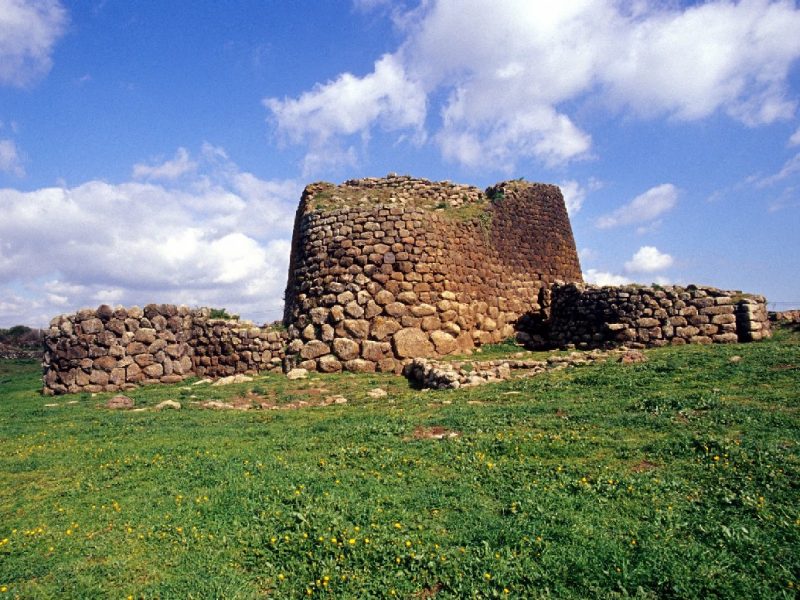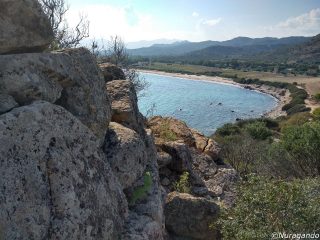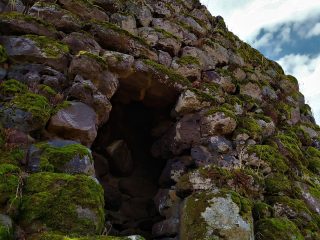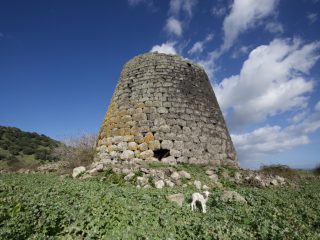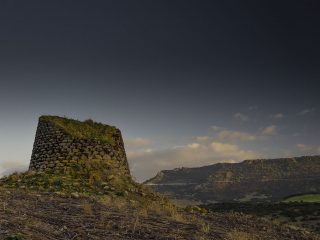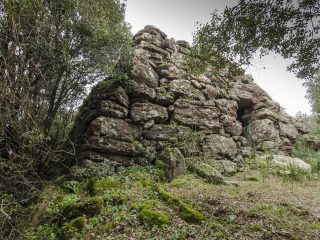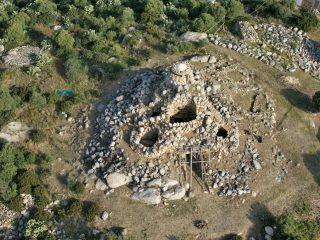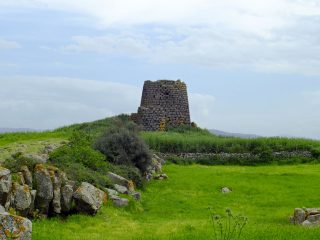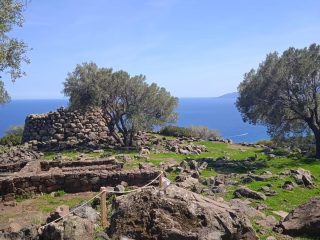The vast Losa Nuraghe archaeological site stands on a rocky elevation on the Abbasanta basalt plateau. Immersed in green Mediterranean shrub, it is partly covered by moss.
It is one of the most significant examples of Nuragic architecture. It features a solid structure, in large blocks of basalt, and clearly displays sophisticated building techniques. It is extremely well preserved.
The original name of this complex, nurache ‘e losas, means “burial nuraghe” and refers to the presence of Roman burial sites.
The nuraghe were built in different stages between the Middle Bronze age and the Iron age (XV-IX centuries B.C.). The site was in use for a long time. Indeed, the ruins of homes from the late Punic, Roman and Byzantine eras were uncovered.
The most inner part is a triangular design with rounded peaks and includes the central tower and stronghold with three towers.
The central tower is the oldest part. Nowadays, standing 13-metres high, it preserves the main chamber with tholos roof (false cupola) and three niches. A spiral staircase leads to a small upper chamber.
The bastion has three smaller towers, two to the side and one at the rear, linked to each other by sturdy stonework binding together the whole building.
The towers have tall, narrow chambers covered by tholos. The main entrance to the bastion provides access to the main tower and the two side ones; there is a secondary access to the rear tower.
The bastion is partially protected by a long wall; the defence wall has protruding circular towers.
Ruins of a village of circular huts can be found around the nuraghe. Hut no.1 stands out at the front of the entrance to the bastion and has two entrances, niches, cabinets and crenels and probably played an important role. The nuraghe and surrounding settlement are enclosed inside a large and imposing oval-shaped wall. The wall has a number of entrances and two protruding circular towers.
The Losa Nuraghe is not far from the “Carlo Felice” SS 131 trunk road. Leave the SS 131 between 123-124 km and take a small road that leads to the entrance of the archaeological site.


